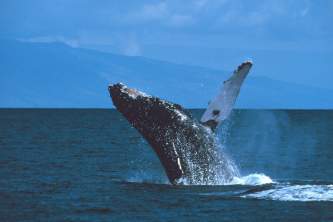You're Near Marine Wildlife
How to Take Great Marine Life Photos
Between the reflection off the water and the movement of your boat or kayak, these shots can be tough. Some tips:
- Avoid using a flash, to mitigate reflections and possible distractions.
- Use a fast shutter speed to help compensate for all the movement.
- Use a polarizer to cut reflections and enrich colors.
- Don't pursue or call out to the animal. Not only will it scare him, but it typically doesn't work. Meanwhile, harassing wildlife is illegal ($1,000 fine and jail time).
- Play hard to get. Doing something interesting—focusing your attention elsewhere, twirling some keys—without seeming to look at the animal may get, say, an otter's attention and he'll approach you instead.
- Be Ethical. Read on for safe, health wildlife viewing habits.
How to Behave Around Marine Life
- Keep Your Distance. At least 100 yards away—and don't get between a mother and young.
- Keep it brief. Limit close viewing to half an hour.
- Don't take up too much space. If you're with other people and paddling in areas with lots of whale activity, stay with your group rather then spreading out.
- Watch for distress: repeated noises, erratic swimming, charging at interlopers, shielding their young, or erratic tail movements.




